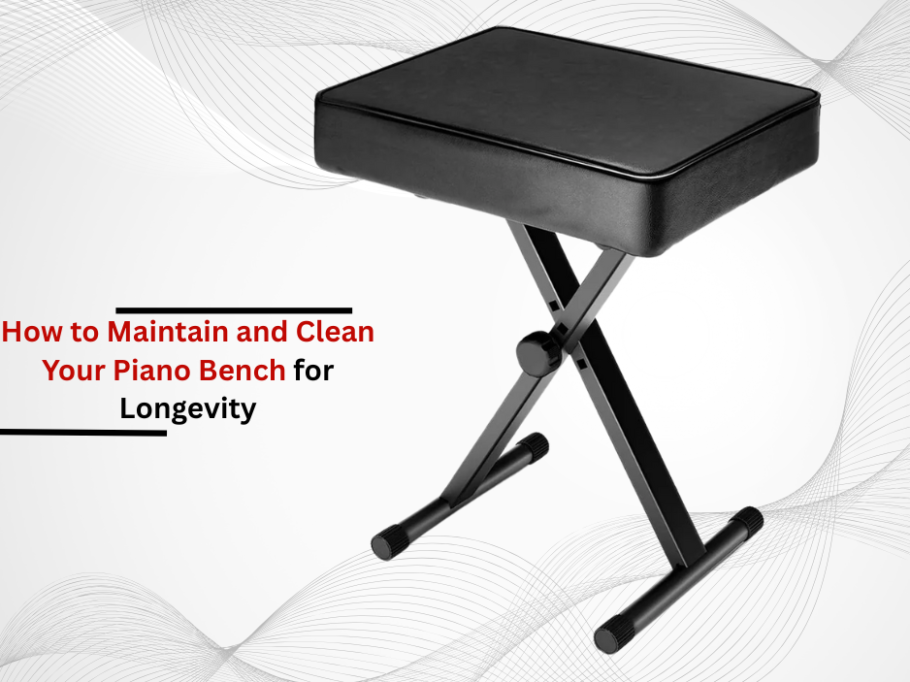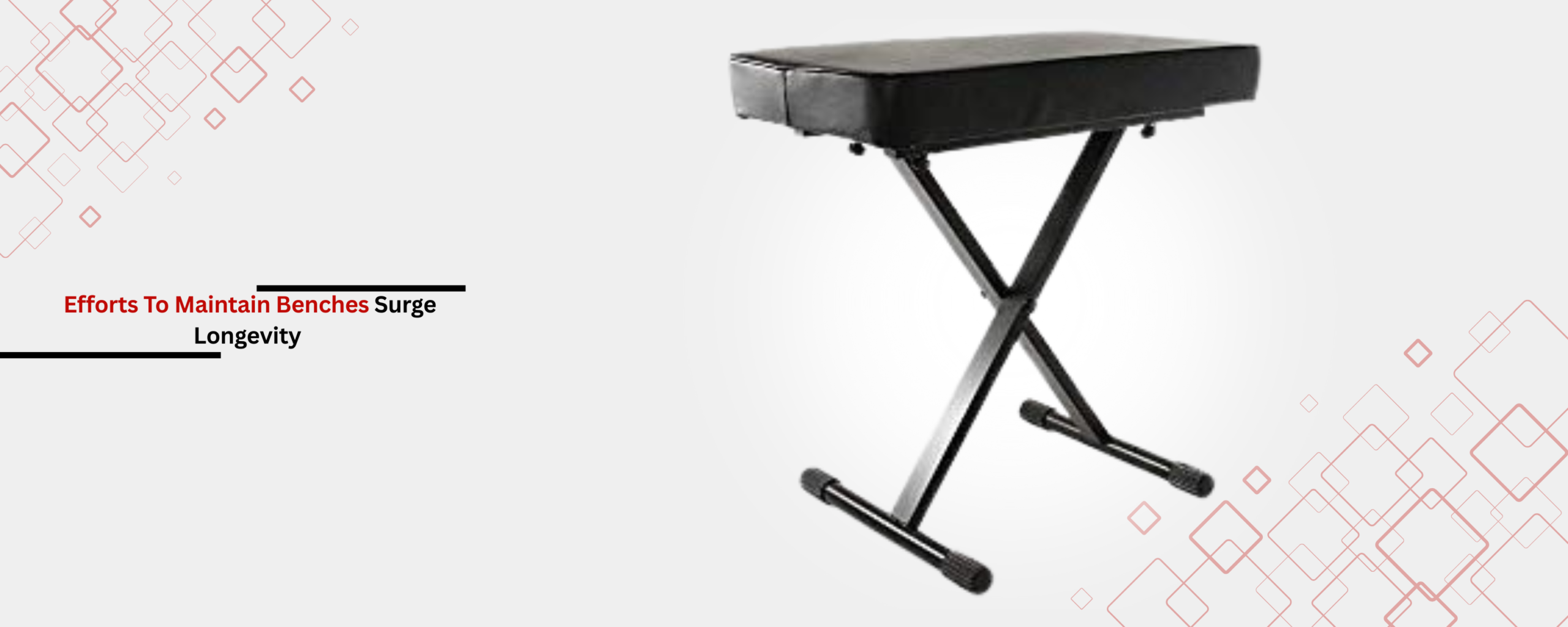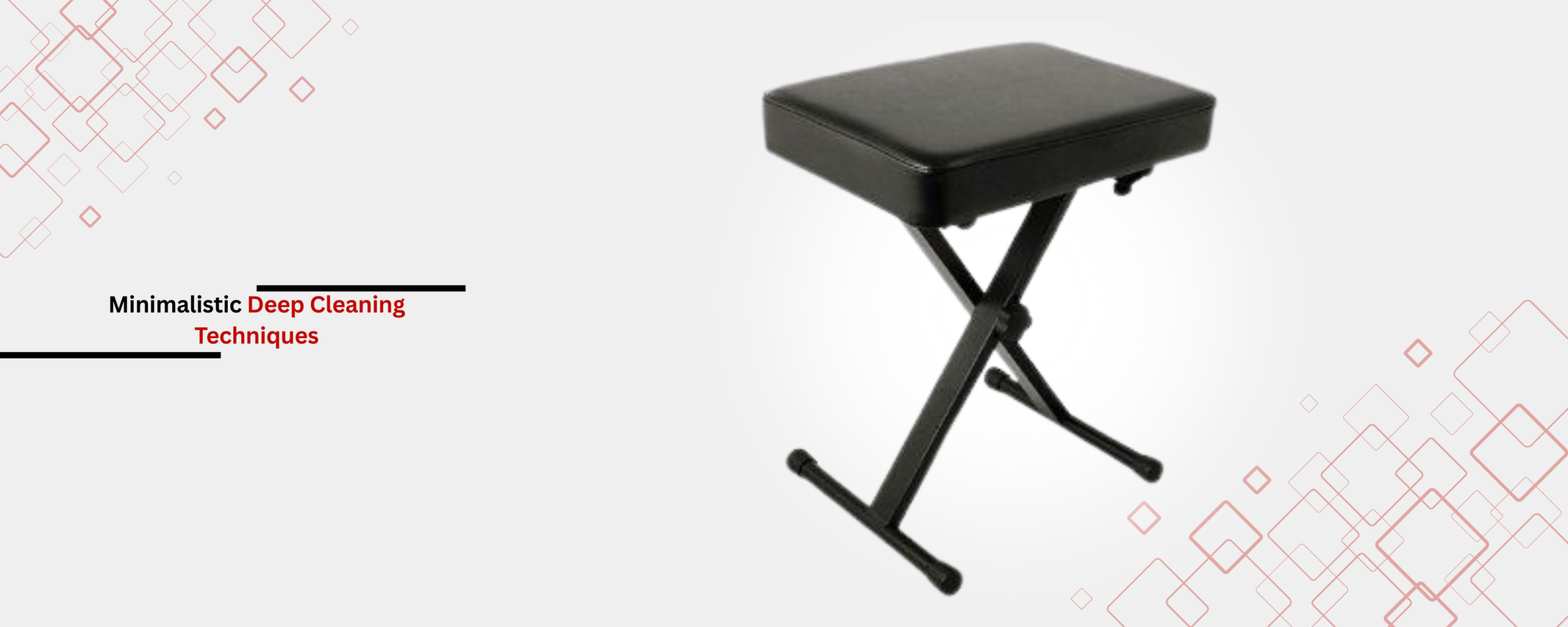A piano bench is more than just a bench; it is specifically designed to increase comfort and improve the experience of playing the piano. Without proper care, the construction or appearance of the bench may become damaged, which can directly affect its functionality. The goal of this article is to help understand how to maintain your piano benches so their dirt accumulation does not become a problem. Irrespective of their style or design, this guide will provide cleaning instructions ranging from daily maintenance to seasonal cleaning.
To know more, Read: Cheap vs. Expensive Keyboard Benches: Is Price a Factor?
Small Efforts To Maintain Benches Surge Longevity
Preventive measures should always come before a bench overuse. Maintenance, like dusting, should be paired with basic desk etiquette. Proper adherence to basic habits reduces operational wear and tear.
- Cleaning: To eliminate the accumulation of dust, upholstered benches should be equipped with a soft microfiber cloth designed for cleaning. Brushed upholstery should be vacuumed using specialized vacuum cleaner attachments that do not trap dust particles within the fabric so they can be easily removed.
- Preventive Actions: Try to avoid as much as possible any cuts or breaches in the piano set. When the bench is not in use, blocking off sunlight can mitigate some of the risks of weakening or fading stool materials while also protecting the surface.
- Prompt Sweeping for Soiling: If a spill occurs, a cloth that is clean and highly absorbent should be used to blot the stained area and ensure that the cloth is not rubbed as that can cause further staining. Bleach or strong chemical agents, along with abrasive wipes, should not be used as they can cause damage to the finish.
Deep Cleans Minimalist Techniques Shifts by Method
Recommended cleaning methods depend on the construction of the bench and are materials-specific.
Wooden Benches
- When cleaning the surface, wiping in one direction with water only, followed by immediate drying, is recommended to prevent warping.
- Polished wood requires periodic touches of furniture polish every three to four months to maintain shine.
Metal Frame Benches
- Framed benches should be cleaned using a mixture of mild soap with water while ensuring that no soapy water seeps into the joints.
- Applying silicone lubricants regularly helps in areas prone to rust and corrosion.
Upholstery Fabrics
- Furnishings should not be exposed to excessive sunlight and should be cleaned by dabbing soft surfaces with a foam sponge using specialized tools, which requires airflow or a vacuum. We recommend steam cleaning the property annually for dirt removal.
Vegan Suede
- The use of a pH-balanced leather cleaner ensures no cracks occur. Suede also needs treatment during the winter season to prevent her from becoming dry and brittle. Cleansing cloths used to preserve a fabric’s fine texture, along with bending and shielding glasses, enable fine protective functions as well.
Protection from Wear Damage
Cushioned benches require special attention to retain their comfort and appearance.
- Rotating Cushions: Enhancing the wear pattern can be done by flipping the cushion over on a monthly basis.
- Using Protective Covers: Slipcovers and throws protect upholstery from damage, spills, friction, and pet hair.
Structural Care: Ensuring Stability
A bench’s frame and joints are critical to its durability.
- Tightening Bolts and Screws: Wobbling can be caused by loose bolts and screws, so these need to be periodically checked as well as tightened.
- Avoiding Excess Weight: Bullying onto the frame and joints places excess load; deeming overall structural integrity weak is strongly discouraged.
Long-Term Preservation Maintenance
To mitigate the strain brought about by seasonal changes in humidity and temperature on the materials used, ongoing maintenance is advised.
- Set a baseline of 40% to 60% humidity as ideal for wooden benches; leveraging a humidifier or dehumidifier as necessary is recommended.
- Before and after peak playing seasons, carry out damage inspection, looking out for cracks, rust spots, and loose stitching, and mark where needed.
Conclusion
Maintenance increases the durability of any piano bench while also ensuring that it remains functional throughout a musician’s career. Brands like 5 Core, Gleam, Roland, and On Stage represent enduring designs, but even the best-quality benches need care. Alongside advancements in materials and manufacturing processes, upcoming innovations will require new approaches to upkeep. The principles of care and attention will always stand the test of time. There is no certainty for the future of piano bench design, but one fact rings true: value in craftsmanship ensures the bench reverberates in symphony with creativity reverberated in every note played.



